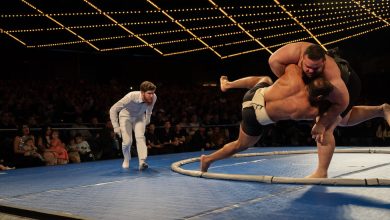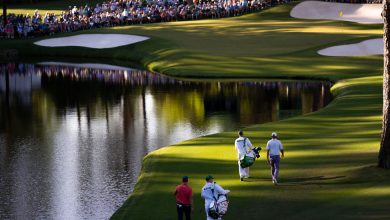Was That a Ground-Rule Double or an Automatic Double?

As people debated if Kevin Kiermaier’s double in the 13th inning of Sunday’s division series game between the Tampa Bay Rays and the Boston Red Sox at Fenway Park was called correctly by the umpires (it was), a second debate emerged about what to call such a hit.
Was it a ground-rule double, as an umpire referred to it after the game? Or an automatic double, as many people on social media referred to it?
The answer is closer to the latter, by the definition of the term “ground rule.” But in colloquial usage, the terms have become somewhat interchangeable.
Unlike sports with uniform specifications for their fields, baseball has always allowed for at least some variance. As a result, parks have developed sets of ground rules, separate from the standard rules of the game, to account for quirks caused by the park’s design and location.
In each case — a ball lost in an ivy-covered wall in Chicago, for example, or one hit off a roof support in any number of major league parks — the ground rules attempt to account for what to do when the extremely unusual actually comes to pass.
What happened at Fenway on Sunday was not such a moment, however, and the Rays, perhaps more than most teams, should have been familiar with how the umpires’ decision on Kiermaier’s hit would come down: They argued for the same ruling to be enforced in their favor on a similar play in 2019.
Sunday’s play:
A play in 2019:
While many ground rules are straightforward, like a ball being lodged in the vines on the wall at Wrigley Field being called a double, others over the years have provided their share of laughs. One of the oddest came in the 1903 World Series when more than 25,000 people tried to cram into Exhibition Park to see the Pittsburgh Pirates take on the Boston Americans for the first championship between the National and American leagues. So many spectators were on the field that they put a rope between the outfielders and the overflowing crowd. A spur-of-the-moment ground rule was created in which a ball that rolled into the crowd beyond the rope would be declared a ground-rule triple. According to MLB.com, 17 ground-rule triples were hit in the nine-game series.
The Rays are among the teams most well-versed in ground rules thanks to their home games being played at Tropicana Field. The catwalks and other obstructions in the roof of their dome require a series of ground rules that umpires must enforce in their games based on where the ball is hit:
-
Batted ball that strikes either of the lower two catwalks (known as the ‘C-Ring’ and the ‘D-Ring’), including any lights or suspended objects attached to either of those catwalks as well as any angled support rods that connect the ‘C-Ring’ to the masts that support the ‘D-Ring’ in fair territory: Home Run.
-
Batted ball that strikes either of the upper catwalks (known as the ‘A-Ring’ and the ‘B-Ring’), including the masts that support each of those catwalks as well as any angled support rods that connect the ‘B-Ring’ to the masts that support the ‘C-Ring’ in fair territory: In Play. If caught by fielder, batter is out and runners advance at own risk.
-
Batted ball that is not judged a home run and remains on a catwalk, light or suspended object: Two Bases.
-
Batted ball strikes catwalk, light or suspended object over foul territory: Dead Ball.
In Kiermaier’s case, there was no ground rule involved. The ball landed in the field of play, ricocheted off Boston’s Hunter Renfroe, and landed on the other side of the fence. As Renfroe never had possession of the ball, Rule 5.06(b)(4)(H) clearly states that the batter and any runners are given two bases from the time of the pitch. It is a uniform ruling that would be called in any park, and therefore would more accurately be referred to as an automatic double.
But anyone being confused by the terminology can be forgiven. Sam Holbrook, the crew chief who correctly enforced the ruling on the field, used the term “ground-rule double” at least three times in his postgame comments.
“There’s no, he would have done this, would have done that,” Holbrook said. “It’s just flat out in the rule book, it’s a ground-rule double.”



